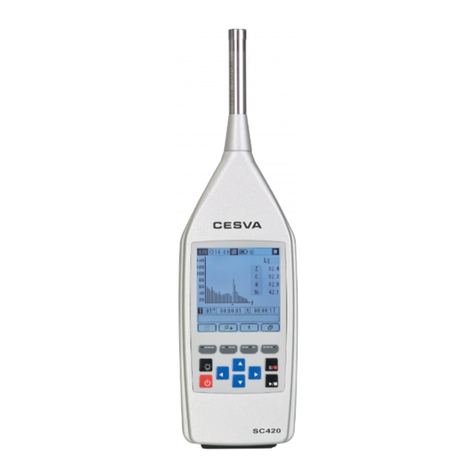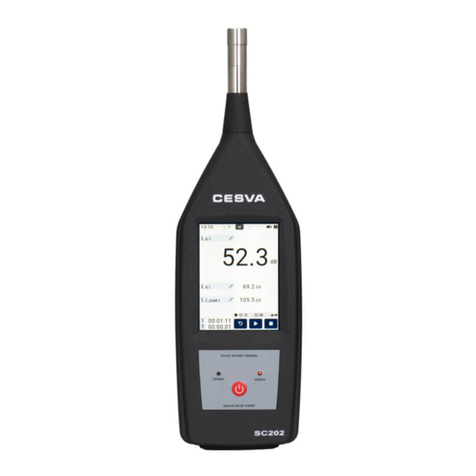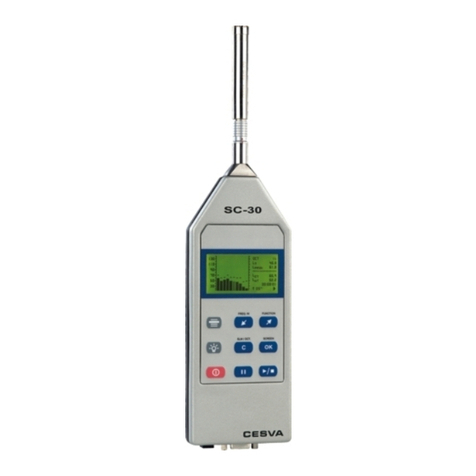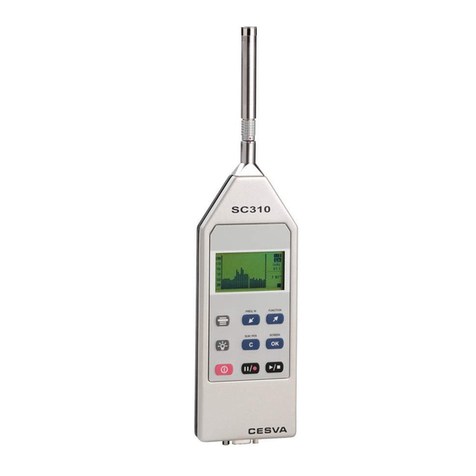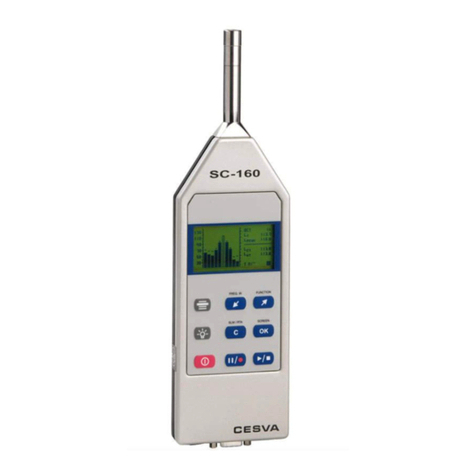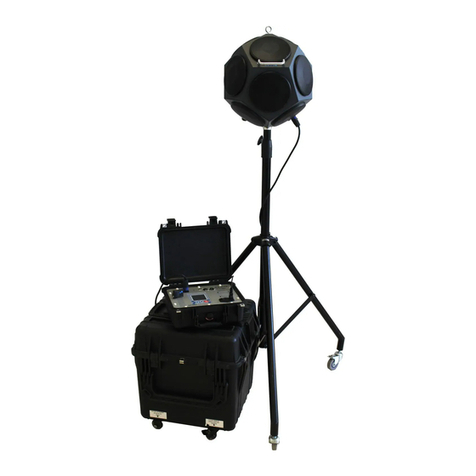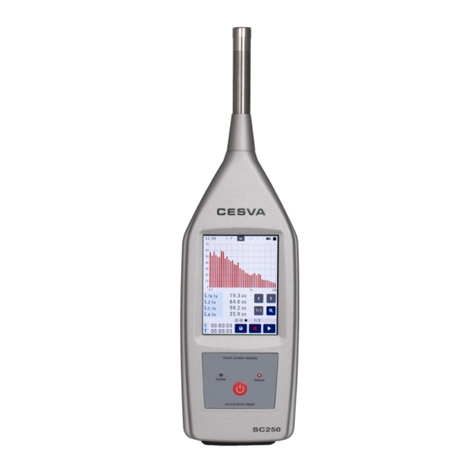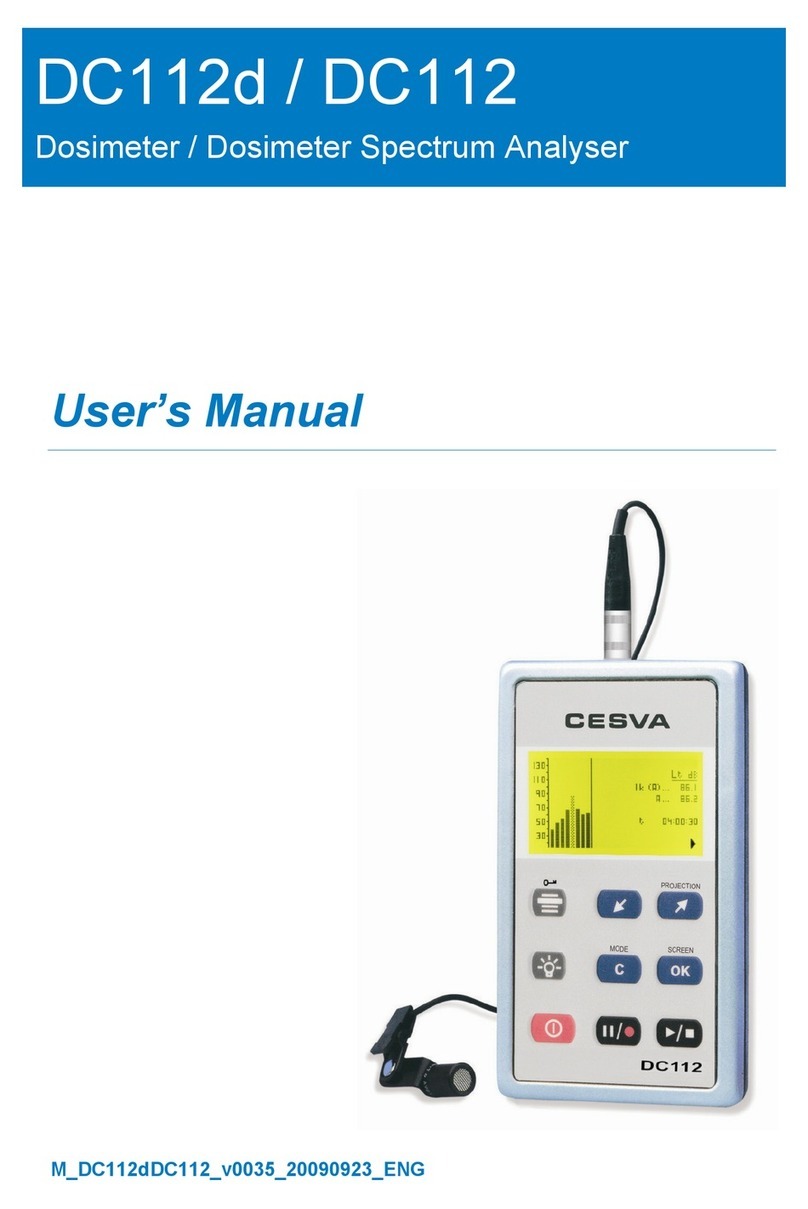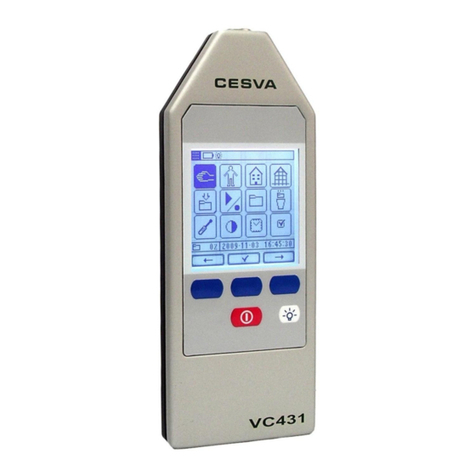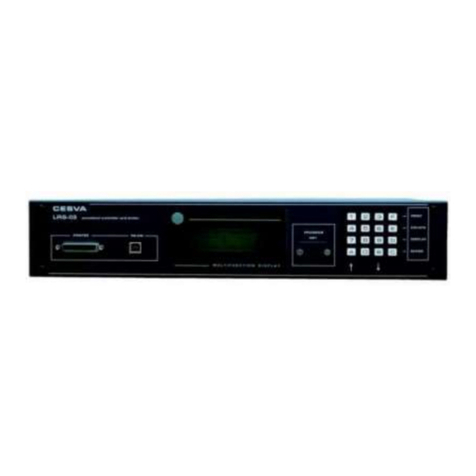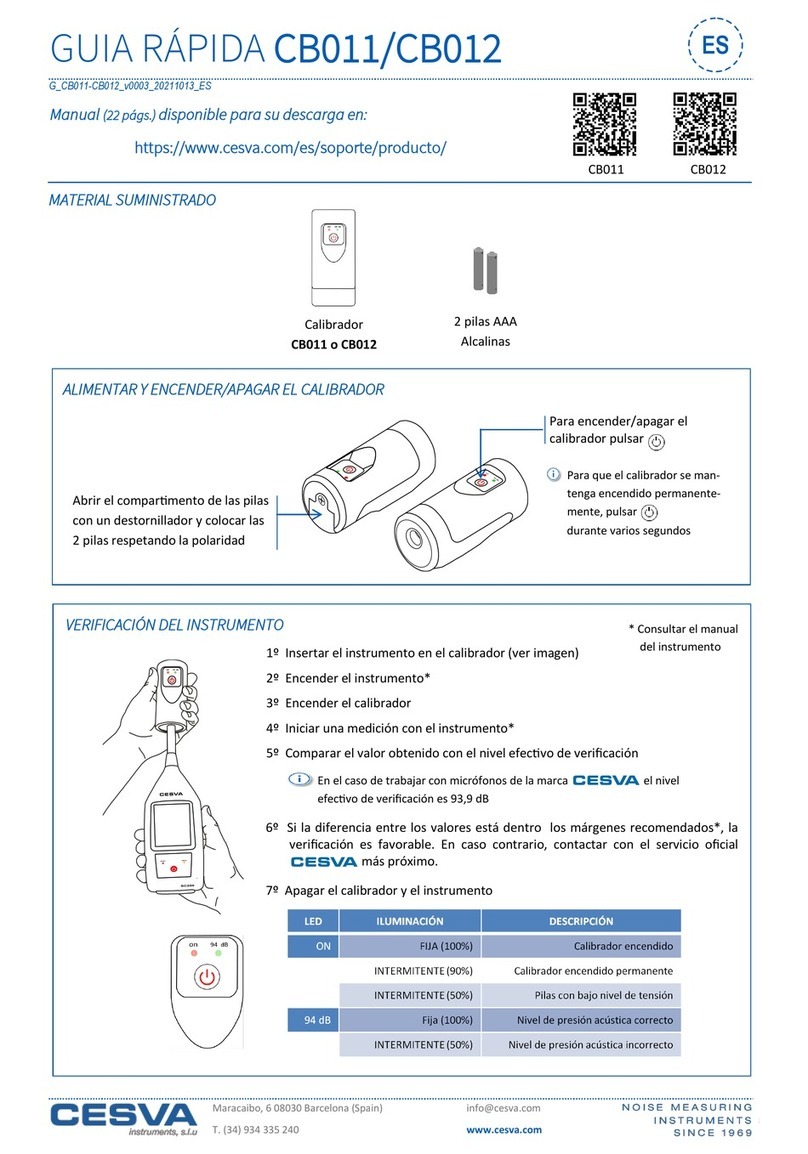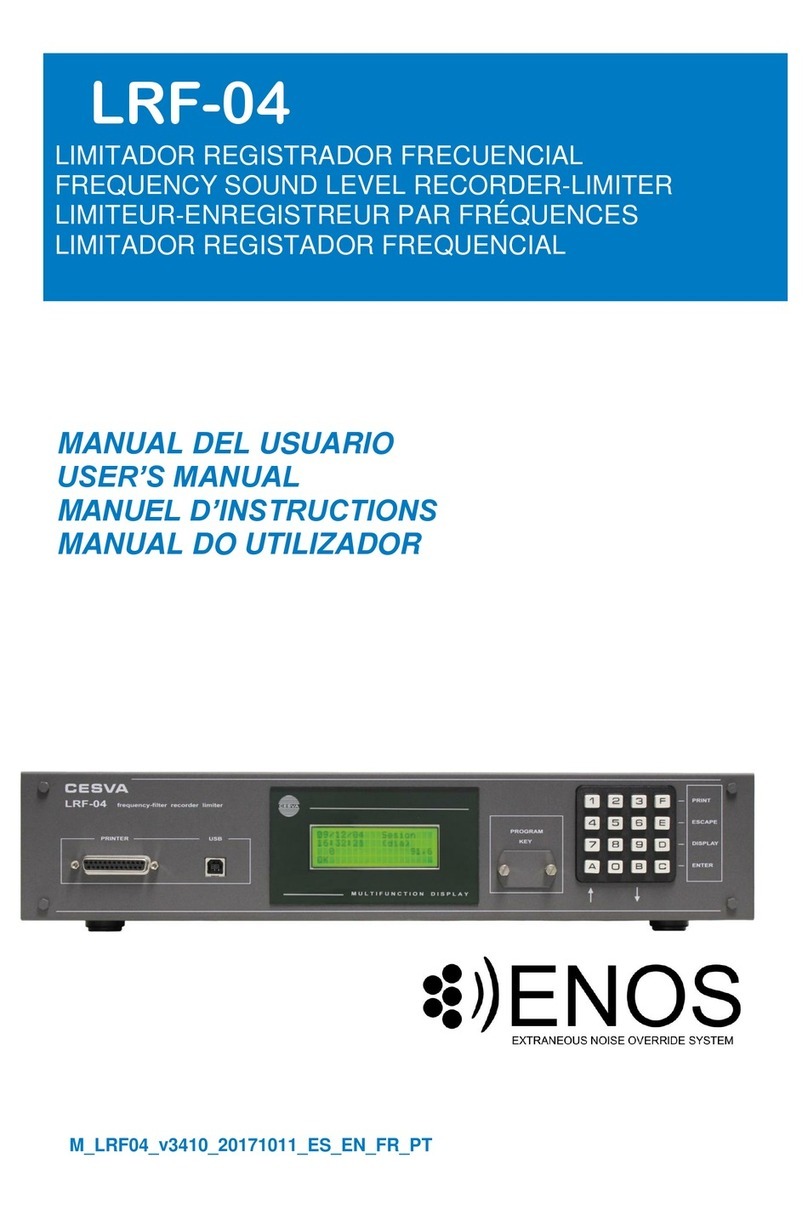
2
2.6.4 Printing..................................................................................................................25
2.6.5 Settings.................................................................................................................25
2.7 Turning the SC160 off.................................................................................................27
2.8 Precautions.................................................................................................................27
2.9 Advice for carrying out measurements ........................................................................28
3. DATA REGISTRATION ...................................................................................................29
3.1 Saving results..............................................................................................................29
3.2 Making a recording......................................................................................................30
3.3 Kinds of recording .......................................................................................................30
3.3.1 Recording in sound level meter mode...................................................................30
3.3.2 Recording in spectrum analyser mode..................................................................31
3.4 Viewing registers.........................................................................................................31
3.5 Erasing memory..........................................................................................................31
4. DATA TRANSFER...........................................................................................................32
4.1 Data transference to a PC: Communication software..................................................32
4.2 The AC output: Recording calibrated measurements ..................................................33
4.3 Printing from the SLM..................................................................................................33
5. TECHNICAL SPECIFICATIONS......................................................................................35
5.1 Measurement range....................................................................................................35
5.2 Detector - Functions LF, LSand LI................................................................................36
5.3 Peak detector - Lpeak function.......................................................................................36
5.4 Display update rates....................................................................................................37
5.5 Integrator - LT, Ltand LEfunctions...............................................................................37
5.6 Frequency weighting...................................................................................................37
5.7 AC output....................................................................................................................38
5.8 Octave filters...............................................................................................................38
5.9 Measurement range (octave band spectrum analyser)................................................39
5.10 Microphone ...............................................................................................................39
5.11 Directivity ..................................................................................................................40
5.12 Effect of the accessories on the microphone.............................................................40
5.13 Reference conditions.................................................................................................42
5.14 Warm-up time............................................................................................................42
5.15 Influence of temperature............................................................................................42
5.16 Influence of humidity .................................................................................................42
5.17 Electromagnetic Compatibility ...................................................................................43
5.18 Influence of vibration.................................................................................................43
5.19 Battery & External supply..........................................................................................44












